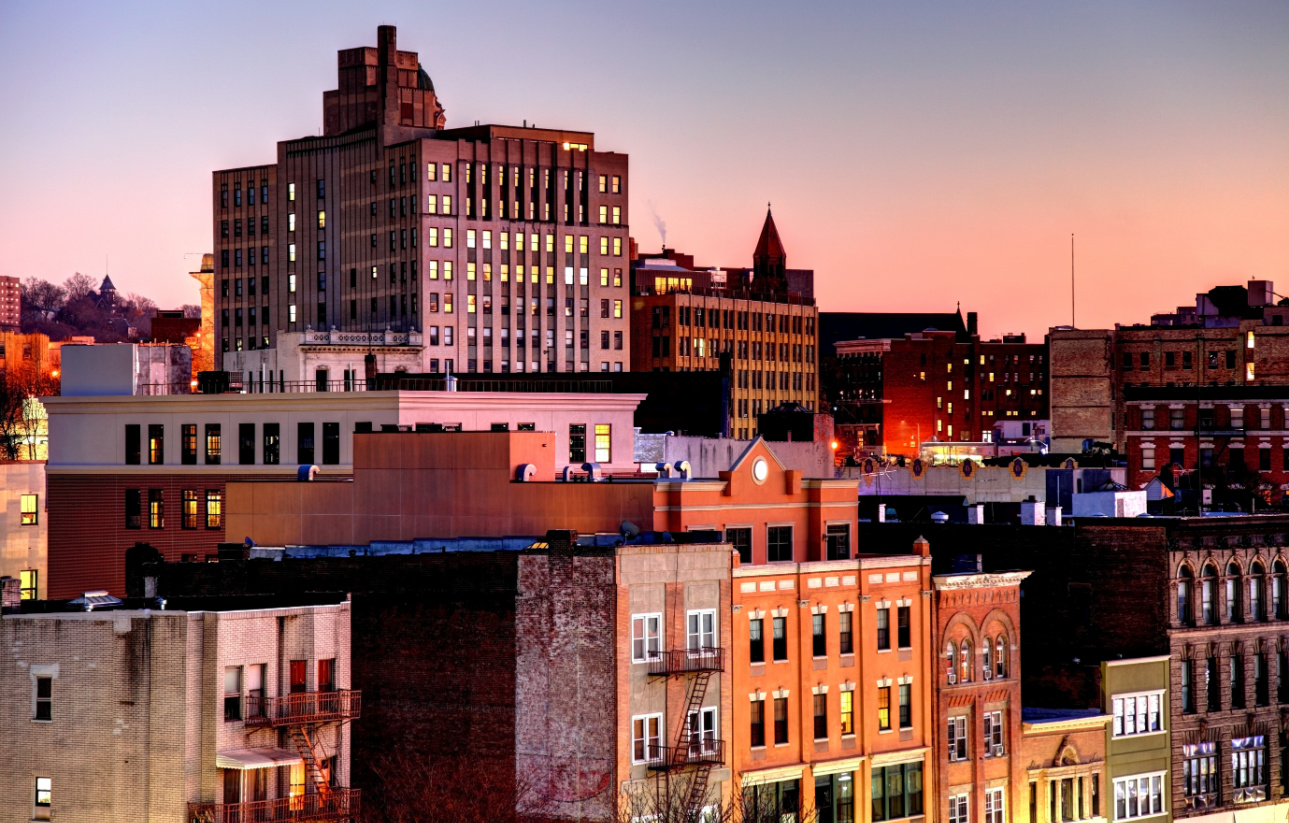Surpassing the Sustainability Standard
September 14, 2022
Meet Lauren Hauck and Lauryn Phinney of The Community Builders (TCB). Hauck and Phinney are overseeing the development of the Ridgeway, which is a multi-phase, affordable housing project, which will ultimately provide over 500 affordable housing units in Yonkers.
The Ridgeway Development Project consists of six building phases, four of which are currently completed or in progress. This project is developed in phases so that while one building is demolished and replaced, residents of that building can simply move into a completed phase and not be forced to evacuate their homes, which is a big issue with most affordable housing renovations. TCB received a $1,250,000 loan from Community Capital New York for the pre-development environmental, architectural, engineering, etc. studies of Phase VI of the Ridgeway Development, the development’s final phase.
According to the NY State Department of Environmental Conservation, all projects proposed “by a state agency or unit of local government” in New York must fill out an environmental impact assessment form, a requirement prompted by the SEQR (State Environmental Quality Review), which ensures that those working on the project are aware of the environmental affects their project will have. About her experience with the SEQR, Hauck, Project Manager, said, “All TCB projects, because they require either funding or approval from the government or both, are subject to SEQR. We often work with environmental consultants to prepare the environmental assessment forms and studies and attorneys to facilitate meetings with municipalities, so this cost is factored into every project budget from the onset.”
However, Hauck and Phinney went beyond the basic SEQR quotas, and explained that all of their projects are completed and outlined with extra measures of sustainability. For the Ridgeway Development, all of the buildings either have/plan to have water conserving fixtures, and hot water is generated by a very efficient boiler. There are in-wall individual HVAC (air-conditioning) units within almost all of the phases. Additionally, all of the light fixtures utilize efficient LED lighting, and Phase I&II, which were originally built without LED lighting, are undergoing upcoming renovations to include this more sustainable and efficient lighting
In terms of Solar Energy, Phases IV&V are designed to include solar panels, and previous phases are incorporating solar panels into their buildings within the next few weeks. Phase I and Phase II are entering an agreement with solar company Sunwealth Power. As part of the New York Community Solar Plan, with the installation of these solar panels, the owner of the solar company receives tax benefits, and the properties being maintained get savings on their energy bill. These savings will go to the residents of the properties, who are of low income, which will be both environmentally and socially sustainable.
When asked about Environmental Certifications, Hauck explained that “Phase I, II, and III were certified LEED. Phase IV and V are or will be certified Enterprise Green Communities. Phase VI is in design right now and will be Passive House (PHIUS) certified (as well at EGC and other certifications that are prerequisites to Phius) and will be an all-electric building not reliant on fossil fuels”. Enterprise Green Community (EGC) certification is quite difficult to obtain. EGC requires integrative design- buildings do not only have to be energy efficient, but should also be designed with the residents’ needs in mind. Additionally, EGC requires both a pre and post-build submission. Once the EGC-certified building is finished, the project team must submit a post-build submission to ensure that they upheld all of the sustainable features and designs they planned within the building. There is also ongoing data collection about the property even after it is built to make sure that it is being properly maintained.
Ridgeway Phase VI, which will be the transformation of a dilapidated building into a new, affordable senior housing development, is very crucial in that it will be The Community Builder’s first PHIUS (Passive House Institute United States) certified affordable housing in NY State. According to Hauck, “Passive House in general is a performance based building certification which focuses on reduced energy consumption for heating and cooling, which is achieved primarily due to a very tight, well insulated building envelope. Due to the tightness of the envelope, continuous ventilation is required to exhaust stale air and introduce fresh air”.
Two incredible environmental consultants of KO2 Consulting, a female-owned environmental consulting company, explained how truly groundbreaking Ridgeway VI truly is. Ozgem Ornektekin, the founder and president of KO2 Consulting, and Ellen Zielinski, KO2 Consulting Vice President, said that with both PHIUS and EGC certifications, Ridgeway VI will take its senior residents’ needs into great consideration. Senior residents are particularly vulnerable to heat and the spread of diseases (such as the Covid-19 pandemic). Passive housing, therefore, ensures that there will be proper, energy efficient ventilation to promote fresh air and healthy circulation throughout the development. Additionally, the Ridgeway VI development, rather than a solar panel roof, will have a solar canopy which goes above the rooftop equipment and maximizes solar potential.
Ornektekin said, “Passive house is cutting edge of design and construction in any building. Any new construction attempting passive house is going way above and beyond the building code and normal developer expectation.. it is investing in the future”. Zielinski, when speaking of all of the teams who are working on this project, made sure to emphasize the role of the Yonkers transformation plan, which consisted of months of conversation with the Yonkers public to consider their input and needs on upcoming construction projects. “This plan demonstrates that public housing can be reinvisioned. [Ridgeway VI] is the government impetus to start a process of taking leadership, energy, and sustainability and showing that they have an impact in design. Together, we want to transform public housing into something sustainable that would last longterm”.
